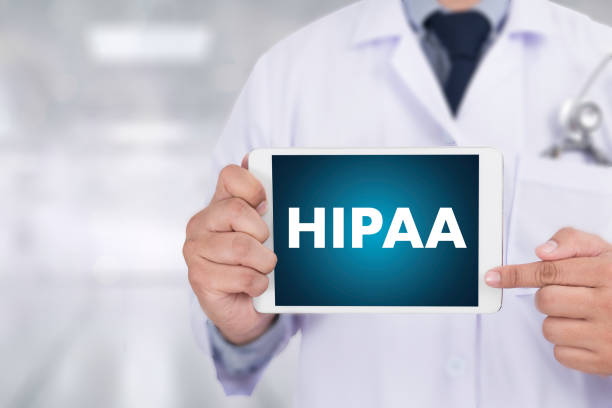How to Maintain HIPAA Compliance with AI Phone Systems

Implementing AI phone systems in dental practices promises to capture every missed call and streamline operations, but navigating HIPAA's complex regulatory requirements can expose practices to devastating financial penalties and legal consequences. This comprehensive guide breaks down exactly what dental practices need to know to leverage AI technology safely while maintaining full regulatory compliance.
Key Takeaways
- HIPAA violations can result in penalties up to $2.1 million per incident, with dental practices facing $305,500 in settlements in 2022 alone
- AI phone systems require comprehensive Business Associate Agreements (BAAs) when vendors store, process, or analyze patient health information
- Technical safeguards mandate AES-256 encryption for voice data, comprehensive audit logging with 6-year retention, and real-time monitoring capabilities
- The January 2025 Security Rule modifications introduce enhanced requirements for technology inventories, network mapping, and 72-hour system restoration
- Risk analysis failures have become OCR's primary enforcement focus in 2025, requiring annual comprehensive assessments
- Workforce training must address AI-specific risks including decision-making transparency, escalation protocols, and documentation requirements
Every missed call costs your dental practice revenue, but implementing AI phone systems to capture those opportunities introduces complex HIPAA compliance requirements. With penalties reaching $2.1 million per violation and recent enforcement actions against dental practices totaling $305,500 in settlements, understanding how to maintain HIPAA compliance while leveraging AI technology has become critical for practice survival.
Understanding HIPAA's Application to AI Phone Systems
Core Federal Regulations
The HIPAA Security Rule applies comprehensively to AI phone systems processing electronic protected health information (ePHI). Under 45 CFR Part 164 Subpart C, any system that records, stores, or transmits patient information electronically must comply with technical, administrative, and physical safeguards.
Key regulatory requirements include:
- Minimum Necessary Standard: AI systems must be configured to access only essential PHI for their intended function
- Reasonable Safeguards: Practices must implement appropriate measures preventing incidental disclosures
- Access Controls: Role-based permissions limiting PHI access to authorized personnel
- Audit Controls: Comprehensive logging of all system activities involving PHI
The January 2025 proposed Security Rule modifications introduce additional requirements specifically relevant to AI implementations, including mandatory technology asset inventories updated every 12 months and network mapping showing ePHI movement patterns.
Business Associate Agreement Requirements
AI phone system vendors typically require Business Associate Agreements (BAAs) when they:
- Store call recordings or transcripts beyond transmission
- Process or analyze PHI for quality assurance
- Maintain routine system access for support
- Provide cloud infrastructure housing patient data
- Perform language translation or transcription services
Essential BAA provisions for AI vendors must address permitted uses and disclosures, appropriate safeguards implementation, subcontractor compliance requirements, and data return or destruction protocols. AI-specific clauses should explicitly prohibit using PHI for model training without authorization and establish algorithm update notification procedures.
Technical Safeguards for AI Phone Systems
Encryption Standards
The HIPAA Security Rule mandates encryption for ePHI transmission and storage. AI phone systems must implement:
- Voice Recording Encryption: AES-256 encryption with unique per-file keys
- Real-time Stream Protection: Secure Real-time Transport Protocol (SRTP) using AES-256-GCM
- Signaling Security: TLS 1.2 minimum, with TLS 1.3 recommended for new implementations
- Database Protection: AES-256 encryption for all stored metadata and transcripts
VoIP systems require additional security layers including end-to-end encryption for voice streams, certificate-based mutual authentication, and Hardware Security Modules for key management.
Audit Logging Requirements
45 CFR § 164.312(b) requires comprehensive logging of all ePHI access and system activities. AI phone systems must capture:
- User Activity: Login attempts, account modifications, administrative actions
- PHI Access: Voice recording playback, transcript viewing, search queries
- System Events: AI model updates, configuration changes, data retention actions
- Call Details: Unique identifiers, participants, duration, AI processing parameters
Logs must be retained for minimum six years under HIPAA, though state laws may require longer retention periods. Real-time monitoring capabilities should detect unusual access patterns, multiple failed login attempts, and potential security incidents.
Access Controls
Technical safeguards require unique user identification, automatic logoff, and encryption/decryption mechanisms. AI phone systems must implement:
- Role-based Access Control: Limiting PHI access based on job responsibilities
- Multi-factor Authentication: Requiring two or more verification methods
- Session Management: Automatic timeout after inactivity periods
- Emergency Access Procedures: Documented protocols for system failures
Administrative Safeguards and Workforce Training
AI-Specific Training Requirements
45 CFR § 164.308(a)(5) mandates security awareness training addressing:
- AI System Understanding: How AI processes patient communications
- Escalation Protocols: When to override AI decisions or transfer to human staff
- Documentation Requirements: Recording AI-assisted interactions properly
- Privacy Considerations: Recognizing AI-specific privacy risks
Houston Methodist's successful implementation of AI phone automation, handling over 200,000 COVID-19 vaccine calls, demonstrates the importance of comprehensive staff preparation.
Risk Assessment Obligations
Annual risk assessments must evaluate AI-specific vulnerabilities including:
- Data Processing Risks: How AI systems handle and store PHI
- Vendor Security: Third-party AI service provider safeguards
- Algorithm Bias: Potential discrimination in AI decision-making
- System Failures: Impact of AI malfunction on patient care
The 2025 OCR enforcement focus on risk analysis failures makes comprehensive assessments critical for compliance.
Physical Safeguards for AI Infrastructure
Facility Access Controls
45 CFR § 164.310 requires securing physical locations housing AI phone system infrastructure:
- Server Room Security: Locked areas with access control systems
- Workstation Controls: Privacy screens and automatic logoff mechanisms
- Device Management: Secure disposal procedures for hardware containing PHI
- Visitor Procedures: Documented protocols for facility access
Small dental practices can implement phased approaches, starting with basic controls and expanding as resources permit. Larger DSOs require comprehensive physical security programs with surveillance monitoring and role-based access authorization.
Common Violations and Enforcement Actions
Phone Communication Violations
The American Association of Endodontists identifies common phone-related violations:
- Voicemail Disclosures: Leaving detailed PHI without patient consent
- Identity Verification Failures: Releasing information to unauthorized parties
- Overheard Conversations: Discussing PHI in public areas
- Unsecured Systems: Using unencrypted VoIP without BAAs
Recent dental practice settlements demonstrate enforcement severity. Three practices paid $305,500 for right of access violations, while Elite Dental Associates settled for $10,000 over improper Yelp review responses.
Penalty Structure
HIPAA violations carry four penalty tiers:
- Unknowing: $141-$71,597 per violation (annual maximum: $25,774 with enforcement discretion)
- Reasonable Cause: $1,419-$71,597 per violation (annual maximum: $103,097)
- Willful Neglect (Corrected): $14,197-$71,597 per violation (annual maximum: $257,744)
- Willful Neglect (Uncorrected): $71,597-$2,134,831 per violation (annual maximum: $2.1 million)
The average healthcare breach costs $4.88 million in 2024, with 204-day average identification times creating substantial operational disruptions.
Why Arini Provides Superior HIPAA Compliance for AI Phone Systems
While maintaining HIPAA compliance with AI phone systems presents complex challenges, Arini's AI-native patient engagement platform provides comprehensive solutions specifically designed for dental practices navigating these regulatory requirements.
Arini distinguishes itself through several HIPAA-focused features:
White-Glove Onboarding: Arini's implementation team ensures proper BAA execution, configures encryption protocols to meet HIPAA standards, and establishes audit logging from day one. Their expertise in reducing missed call rates comes with built-in compliance frameworks.
Customizable Compliance Workflows: Unlike generic AI receptionists, Arini allows practices to build conversion-focused workflows that maintain HIPAA compliance while capturing specific intake information. Separate flows for new versus existing patients ensure minimum necessary standards are met.
Advanced Audit Controls: The platform's Live Call Dashboard provides real-time monitoring with comprehensive logging of every interaction, supporting the six-year retention requirements while enabling schedule utilization improvements.
Enterprise-Grade Security: Built by MIT AI experts, Arini implements AES-256 encryption throughout the platform, role-based access controls, and secure cloud infrastructure that exceeds HIPAA technical safeguard requirements. Their enterprise solutions scale securely across multi-location DSOs.
Proven Compliance Track Record: Case studies like Unified Dental Care demonstrate Arini's ability to maintain 100% call answer rates while adhering to strict HIPAA requirements across eight locations. Normandy Lake Dentistry achieved their 90% answer rate target while maintaining full regulatory compliance.
For practices seeking to reduce front desk labor costs without compromising HIPAA compliance, Arini provides the comprehensive safeguards, documentation, and support needed to meet regulatory requirements while improving patient satisfaction scores. Their platform transforms compliance from a burden into a competitive advantage through intelligent automation that respects both regulatory requirements and patient privacy.
Frequently Asked Questions
What specific HIPAA training do staff need when implementing AI phone systems?
Staff require comprehensive training covering AI-specific privacy risks, system operation procedures, and escalation protocols. Training must address how AI processes PHI, when human intervention is necessary, proper documentation of AI-assisted interactions, and incident response procedures. Annual refresher training with documented attendance is mandatory under 45 CFR § 164.308(a)(5), with role-specific modules for different staff responsibilities. Practices should maintain training records for six years and update content whenever system capabilities change or new features are deployed.
Do AI phone systems require different encryption standards than traditional VoIP systems?
AI phone systems require the same baseline encryption standards as VoIP systems—AES-256 for stored data and TLS 1.2 minimum for transmission—but add complexity through multiple data states. Voice recordings need encryption at rest with unique per-file keys, real-time streams require SRTP protection, transcripts demand database-level encryption, and AI processing necessitates encrypted temporary buffers. The key difference lies in ensuring encryption persists through the entire AI processing pipeline, including model inference and temporary storage during transcription or analysis.
How long must dental practices retain AI phone system logs and recordings?
HIPAA requires six-year minimum retention for audit logs documenting system access and PHI interactions. However, state laws often impose longer requirements—some states mandate 7-10 year retention for certain records. Voice recordings containing clinical information may be considered part of the patient's medical record, potentially requiring retention periods matching your state's medical record requirements. Practices should implement tiered storage strategies, moving older recordings to cost-effective archival storage while maintaining accessibility for compliance reviews.
What constitutes a reportable breach if an AI phone system is compromised?
A breach occurs when unsecured PHI is accessed, acquired, used, or disclosed in violation of HIPAA requirements. For AI phone systems, reportable breaches include unauthorized access to voice recordings or transcripts, system compromises exposing patient conversations, vendor security incidents affecting stored PHI, and improper AI model training using patient data. The Breach Notification Rule requires notification within 60 days to affected individuals, HHS, and potentially media outlets for breaches affecting 500+ individuals.
Can practices use AI phone recordings for quality improvement without additional patient consent?
Yes, using AI phone recordings for quality improvement generally falls under "healthcare operations" permitted by HIPAA without additional consent, provided the use aligns with the practice's Notice of Privacy Practices. However, practices must ensure recordings are accessed only by authorized personnel with legitimate needs, minimum necessary standards are applied, and appropriate safeguards prevent unauthorized disclosure. If recordings will be used for AI model training or shared with vendors beyond normal operations, explicit patient authorization under 45 CFR 164.508 becomes necessary.









